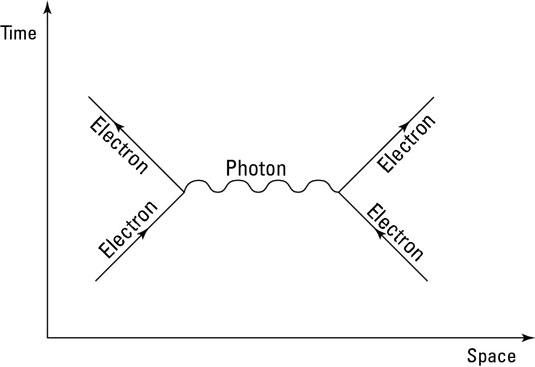Particles (Gas Molecules , Electrons , Protons , Neutrons & Fermions)
Generally six kinds of particles are use in the field of Physics
(1) Properties of Gas Molecules
(i) It is an identical and distinguishable particles.
(ii) It has no spin.
(iii) It follow the Maxwell-Boltzamn distribution function.
(iv) The quantum view : The wave function of the particles overlap to a negligible extent.
(2) Properties of Bosons Particles
(i) It is an identical and indistinguishable particles.
(ii) It has zero and integral multiple spin.
(iii) The wave function overlap each other.
(iv) They do not obey Pauli exclusion principle.
(v) Bose-Einstein distribution function holds for such particles.
(vi) Application of this particles for account the spectrum of radiation from black body.
(vii)
- Z boson W boson (actually two particles — the W+ and W– bos
- Higgs one hasn’t been found yet)

In addition, many physicists believe that there probably exists a boson called the graviton, which
is related to gravity. Composite bosons can also exist; these are
formed by combining together an even number of different fermions.
(3) Properties of Fermions
Definition : Fermions, named after Enrico Fermi, are particles that have a half-integer value of quantum spin. Unlike bosons, they obey the Pauli exclusion principle, which means that multiple fermions can’t exist in the same quantum state. While bosons are seen as mediating the forces of nature, fermions are particles that are a bit more “solid” and are what we tend to think of matter particles. Quarks are fermions. In addition to quarks, there is a second family of fermions called leptons. Leptons are elemelary particles.
That can’t (so far as scientists know) be broken down into smaller particles. Definition : Fermions, named after Enrico Fermi, are particles that have a half-integer value of quantum spin. Unlike bosons, they obey the Pauli exclusion principle, which means that multiple fermions can’t exist in the same quantum state. While bosons are seen as mediating the forces of nature, fermions are particles that are a bit more “solid” and are what we tend to think of matter particles. Quarks are fermions. In addition to quarks, there is a second family of fermions called leptons. Leptons are elemelary particles.
(4) The properties of Electron.
(i) The
electron is a lepton, but the Standard Model of particle physics tells
us that there are actually three generations of particles.
(ii) Electron is a negative (-ve) charge particles which is present in the atom of substance.
(5) The properties of Protons
The word proton is Greek for "first", and this name was given to the hydrogen nucleus by Ernest Rutherford in 1920. In previous years, Rutherford had discovered that the hydrogen nucleus (known to be the lightest nucleus) could be extracted from the nuclei of nitrogen by atomic collisions.
(i) Protons is a positive (+ve) charge particles which is present in the atom of substance.
(6) The properties of Neutrons
(i) Neutron is a neutral particle means it has no charge .
(ii) This particles present in an atom of matter.
(ii) This particles present in an atom of matter.



I am very impressed with your post because this post is very beneficial for me and provide a new knowledge to me
ReplyDeletehttps://vstcyberpc.com/neutron-3-advanced-crack/
https://vstcyberpc.com/waves-gold-bundle-crack/
https://vstcyberpc.com/avox-4-vst-crack/
https://vstcyberpc.com/freemake-video-converter-crack/
I guess I am the only one who comes here to share my very own experience guess what? I am using my laptop for almost the post 2 years.
ReplyDeleteNeutron 3 Advanced Crack
DAW Cassette VST Crack
Analog Brass Winds Crack
Spectrasonics Trilian Crack
Philharmonik VST Crack
Captain Plugins Crack